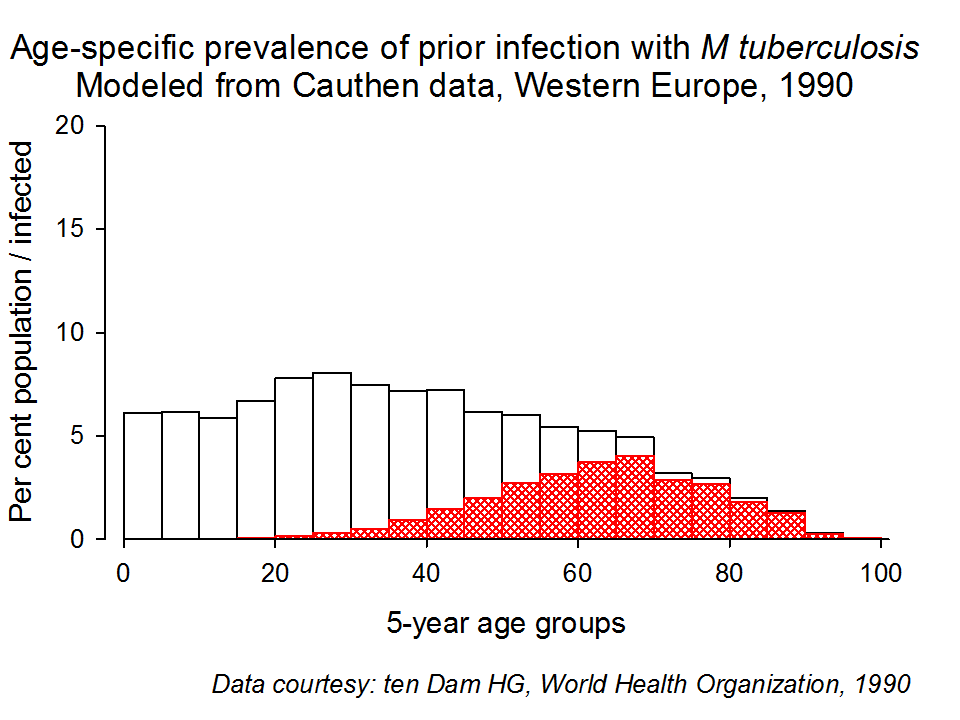 |
|
| |
|
|
| Slide |
057 |
Epidemiologic Basis of Tuberculosis Control |
 |
Next |
 |
 |
Previous |
 |
First |
 |
Last |
| If one makes the assumption that the risk of infection varies only by calendar time and is uniform over different population segments (which is obviously not the case), then it is possible to back-calculate the estimated underlying prevalence of tuberculous infection.
Such an estimate is given here for western Europe. It shows that oldest population segment has a prevalence of infection approaching 100% while the youngest is virtually free of infection.
The reason is that the oldest generation was born at a time when the risk of infection was very large and, in addition, this birth cohort has lived for such a long time that their cumulative chance of having escaped infection is very small.
In contrast, the youngest generation was born into a calendar time when the risk of infection was very small and also they had lived for a shorter period of time.
If the negative slope (decline) in the risk of infection can be sustained, then each generation that dies will remove a large infection pool from the population and will be replaced by a generation with an increasingly lower risk of becoming infected. |
| |
|
Go to top
Last update:
September 10, 2010